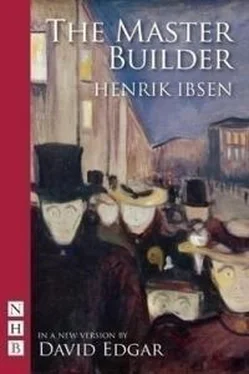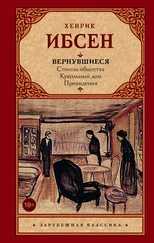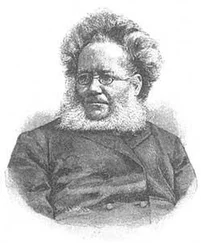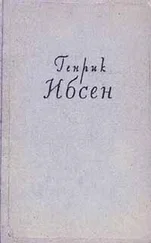Генрик Ибсен - The Master Builder
Здесь есть возможность читать онлайн «Генрик Ибсен - The Master Builder» весь текст электронной книги совершенно бесплатно (целиком полную версию без сокращений). В некоторых случаях можно слушать аудио, скачать через торрент в формате fb2 и присутствует краткое содержание. Год выпуска: 2014, Издательство: epubBooks Classics, Жанр: Драматургия, на английском языке. Описание произведения, (предисловие) а так же отзывы посетителей доступны на портале библиотеки ЛибКат.
- Название:The Master Builder
- Автор:
- Издательство:epubBooks Classics
- Жанр:
- Год:2014
- ISBN:нет данных
- Рейтинг книги:3 / 5. Голосов: 1
-
Избранное:Добавить в избранное
- Отзывы:
-
Ваша оценка:
- 60
- 1
- 2
- 3
- 4
- 5
The Master Builder: краткое содержание, описание и аннотация
Предлагаем к чтению аннотацию, описание, краткое содержание или предисловие (зависит от того, что написал сам автор книги «The Master Builder»). Если вы не нашли необходимую информацию о книге — напишите в комментариях, мы постараемся отыскать её.
The Master Builder — читать онлайн бесплатно полную книгу (весь текст) целиком
Ниже представлен текст книги, разбитый по страницам. Система сохранения места последней прочитанной страницы, позволяет с удобством читать онлайн бесплатно книгу «The Master Builder», без необходимости каждый раз заново искать на чём Вы остановились. Поставьте закладку, и сможете в любой момент перейти на страницу, на которой закончили чтение.
Интервал:
Закладка:
The Master Builder
Henrik Ibsen
Introduction
With The Master Builder —or Master Builder Solness , as the title runs in the original—we enter upon the final stage in Ibsen's career. "You are essentially right," the poet wrote to Count Prozor in March 1900, "when you say that the series which closes with the Epilogue ( When We Dead Awaken ) began with Master Builder Solness ."
"Ibsen," says Dr. Brahm, "wrote in Christiania all the four works which he thus seems to bracket together— Solness , Eyolf , Borkman , and When We Dead Awaken . He returned to Norway in July 1891, for a stay of indefinite length; but the restless wanderer over Europe was destined to leave his home no more…. He had not returned, however, to throw himself, as of old, into the battle of the passing day. Polemics are entirely absent from the poetry of his old age. He leaves the State and Society at peace. He who had departed as the creator of Falk [in Love's Comedy ] now, on his return, gazes into the secret places of human nature and the wonder of his own soul."
Dr. Brahm, however, seems to be mistaken in thinking that Ibsen returned to Norway with no definite intention of settling down. Dr. Julius Elias (an excellent authority) reports that shortly before Ibsen left Munich in 1891, he remarked one day, "I must get back to the North!" "Is that a sudden impulse?" asked Elias. "Oh no," was the reply; "I want to be a good head of a household and have my affairs in order. To that end I must consolidate may property, lay it down in good securities, and get it under control—and that one can best do where one has rights of citizenship." Some critics will no doubt be shocked to find the poet whom they have written down an "anarchist" confessing such bourgeois motives.
After his return to Norway, Ibsen's correspondence became very scant, and we have no letters dating from the period when he was at work on The Master Builder . On the other hand, we possess a curious lyrical prelude to the play, which he put on paper on March 16, 1892. It is said to have been his habit, before setting to work on a play, to "crystallise in a poem the mood which then possessed him;" but the following is the only one of these keynote poems which has been published. I give it in the original language, with a literal translation:
DE SAD DER, DE TO—
De sad der, de to, i saa lunt et hus ved host og i venterdage, Saa braendte huset. Alt ligger i grus. De to faar i asken rage.
For nede id en er et smykke gemt,— et smykke, som aldrig kan braende. Og leder de trofast, haender det nemt at det findes af ham eller hende.
Men finder de end, brandlidte to, det dyre, ildfaste smykke,— aldrig han finder sin braendte tro, han aldrig sin braendte lykke.
THEY SAT THERE, THE TWO—
They sat there, the two, in so cosy a house, through autumn and winter days. Then the house burned down. Everything lies in ruins. The two must grope among the ashes.
For among them is hidden a jewel—a jewel that never can burn. And if they search faithfully, it may easily happen that he or she may find it.
But even should they find it, the burnt–out two—find this precious unburnable jewel—never will she find her burnt faith, he never his burnt happiness.
This is the latest piece of Ibsen's verse that has been given to the world; but one of his earliest poems—first printed in 1858—was also, in some sort, a prelude to The Master Builder . Of this a literal translation may suffice. It is called,
BUILDING–PLANS
I remember as clearly as if it had been to–day the evening when, in the paper, I saw my first poem in print. There I sat in my den, and, with long–drawn puffs, I smoked and I dreamed in blissful self–complacency.
"I will build a cloud–castle. It shall shine all over the North. It shall have two wings: one little and one great. The great wing shall shelter a deathless poet; the little wing shall serve as a young girl's bower."
The plan seemed to me nobly harmonious; but as time went on it fell into confusion. When the master grew reasonable, the castle turned utterly crazy; the great wing became too little, the little wing fell to ruin.
Thus we see that, thirty–five years before the date of The Master Builder , Ibsen's imagination was preoccupied with a symbol of a master building a castle in the air, and a young girl in one of its towers.
There has been some competition among the poet's young lady friends for the honour of having served as his model for Hilda. Several, no doubt, are entitled to some share in it. One is not surprised to learn that among the papers he left behind were sheaves upon sheaves of letters from women. "All these ladies," says Dr. Julius Elias, "demanded something of him—some cure for their agonies of soul, or for the incomprehension from which they suffered; some solution of the riddle of their nature. Almost every one of them regarded herself as a problem to which Ibsen could not but have the time and the interest to apply himself. They all thought they had a claim on the creator of Nora…. Of this chapter of his experience, Fru Ibsen spoke with ironic humour. 'Ibsen (I have often said to him), Ibsen, keep these swarms of over–strained womenfolk at arm's length.' 'Oh no (he would reply), let them alone. I want to observe them more closely.' His observations would take a longer or shorter time as the case might be, and would always contribute to some work of art."
The principal model for Hilda was doubtless Fraulein Emilie Bardach, of Vienna, whom he met at Gossensass in the autumn of 1889. He was then sixty–one years of age; she is said to have been seventeen. As the lady herself handed his letters to Dr. Brandes for publication, there can be no indiscretion in speaking of them freely. Some passages from them I have quoted in the introduction to Hedda Gabler —passages which show that at first the poet deliberately put aside his Gossensass impressions for use when he should stand at a greater distance from them, and meanwhile devoted himself to work in a totally different key. On October 15, 1889, he writes, in his second letter to Fraulein Bardach: "I cannot repress my summer memories, nor do I want to. I live through my experiences again and again. To transmute it all into a poem I find, in the meantime, impossible. In the meantime? Shall I succeed in doing so some time in the future? And do I really wish to succeed? In the meantime, at any rate, I do not…. And yet it must come in time." The letters number twelve in all, and are couched in a tone of sentimental regret for the brief, bright summer days of their acquaintanceship. The keynote is struck in the inscription on the back of a photograph which he gave her before they parted: An die Maisonne eines Septemberlebens—in Tirol , [1] "To the May–sun of a September life—in Tyrol."
27/9/89. In her album he had written the words:
Hohes, schmerzliches Gluck— um das Unerreichbare zu ringen! [2] "High, painful happiness—to struggle for the unattainable!"
in which we may, if we like, see a foreshadowing of the Solness frame of mind. In the fifth letter of the series he refers to her as "an enigmatic Princess"; in the sixth he twice calls her "my dear Princess"; but this is the only point at which the letters quite definitely and unmistakably point forward to The Master Builder . In the ninth letter (February 6, 1890) he says: "I feel it a matter of conscience to end, or at any rate, to restrict, our correspondence." The tenth letter, six months later, is one of kindly condolence on the death of the young lady's father. In the eleventh (very short) note, dated December 30, 1890, he acknowledges some small gift, but says: "Please, for the present, do not write me again…. I will soon send you my new play [ Hedda Gabler ]. Receive it in friendship, but in silence!" This injunction she apparently obeyed. When The Master Builder appeared, it would seem that Ibsen did not even send her a copy of the play; and we gather that he was rather annoyed when she sent him a photograph signed "Princess of Orangia." On his seventieth birthday, however, she telegraphed her congratulations, to which he returned a very cordial reply. And here their relations ended.
Читать дальшеИнтервал:
Закладка:
Похожие книги на «The Master Builder»
Представляем Вашему вниманию похожие книги на «The Master Builder» списком для выбора. Мы отобрали схожую по названию и смыслу литературу в надежде предоставить читателям больше вариантов отыскать новые, интересные, ещё непрочитанные произведения.
Обсуждение, отзывы о книге «The Master Builder» и просто собственные мнения читателей. Оставьте ваши комментарии, напишите, что Вы думаете о произведении, его смысле или главных героях. Укажите что конкретно понравилось, а что нет, и почему Вы так считаете.









